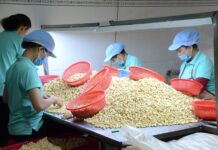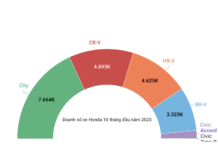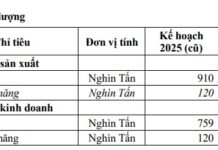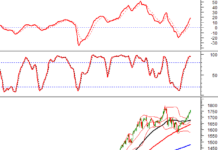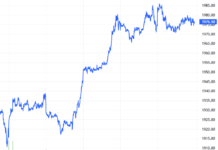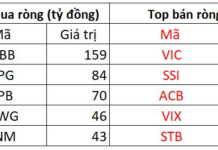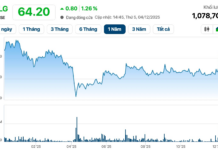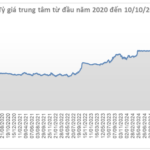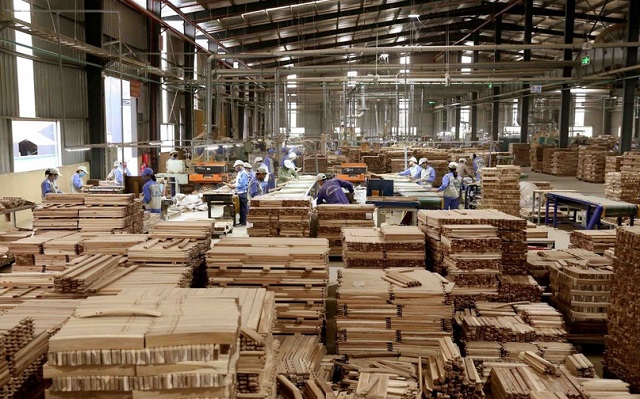
Furniture manufacturing for export. (Photo: Vũ Sinh/TTXVN)
|
Wood and furniture are among the highest-value export categories in the agricultural sector, with annual revenues surpassing $15 billion.
However, unexpected tariff policies from the United States—the largest export market for the industry—have placed unprecedented pressure on Vietnam’s wood and furniture sector. In this context, long-term adaptation strategies have become more critical than ever for businesses.
Shortly after implementing retaliatory tariffs, U.S. President Donald Trump signed an executive order imposing a 10% tariff on raw and sawn timber, and a 25% tariff on kitchen cabinets, bathroom vanities, and upholstered wooden furniture, effective October 14.
These tariffs may escalate to 30% and 50% by early next year for partners failing to reach trade agreements with the U.S. This move has caught many Vietnamese exporters off guard, leaving them in a reactive position.
Trịnh Minh Huy, Marketing Director at D’FURNI—a company specializing in exporting furniture, upholstered products, modular furniture, and project furniture—stated that the U.S. market accounts for 70% of the company’s total export revenue and 50% of its total sales. Thus, the sudden 25% tariff increase was a significant shock. More concerning is the potential rise to 30% by January 1, 2026, with products like cabinets facing tariffs of up to 50%.
The mere two-week notice between the announcement and implementation of the new tariffs left Vietnamese exporters and their U.S. partners scrambling. Upon receiving the tariff news, companies had to incur additional costs to expedite some orders via air freight before the October 14 deadline.
With a substantial number of partners and clients, D’FURNI held continuous meetings to minimize tariff-related losses. Numerous solutions were proposed, including partners demanding sellers absorb the entire tariff, sharing additional costs, or requesting early deliveries before potential further increases in 2026—as noted by Trịnh Minh Huy.
Nguyễn Liêm, Vice Chairman of the Vietnam Timber and Forest Products Association (VIFORES) and Chairman of Lam Viet JSC, highlighted the challenges facing the wood and furniture industry since the 20% retaliatory tariffs and the new tariffs under the Trade Expansion Act. The sector also faces frequent trade defense lawsuits, increasing pressure on businesses.
During the tariff postponement, U.S. buyers increased imports, boosting Vietnam’s exports. However, recent months have seen declining orders due to rising inventory levels among U.S. distributors, reduced demand, and significant increases in U.S. furniture retail prices. The year-end period will be particularly challenging for businesses—predicted Nguyễn Liêm.
Nguyễn Chánh Phương, Vice Chairman of the Handicraft and Wood Industry Association of Ho Chi Minh City (HAWA), argued that while the 20% retaliatory tariffs and the new 25% import tariffs impact businesses and exports, the effects are not catastrophic. This is because the U.S. has imposed tariffs on most partners, and Vietnam’s tariffs remain average compared to others. Vietnam’s wood and furniture industry remains competitive with other producing nations.
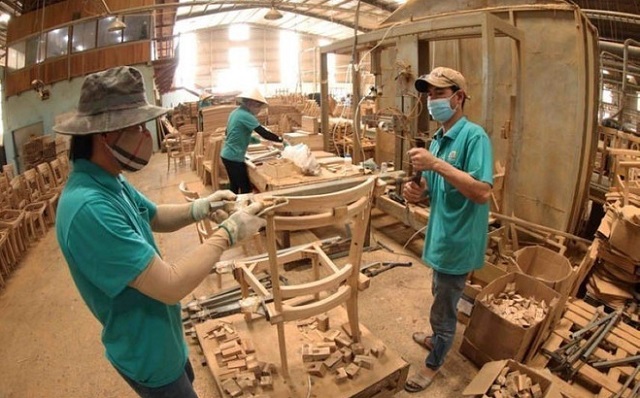 Exported wood products. (Photo: Vũ Sinh/TTXVN)
|
The greatest risk lies not in the tariff rates but in the U.S.’s frequent policy changes, creating market instability and affecting investor, manufacturer, and buyer confidence. When stakeholders cannot predict future developments, they cannot focus on production. Conversely, buyers become cautious, avoiding large or long-term orders—analyzed Nguyễn Chánh Phương.
Furniture companies note that rising tariffs force manufacturers to reduce profit margins to maintain prices or increase selling prices. Amid economic volatility and inflation, U.S. consumers will scrutinize purchases more carefully, leading to reduced purchasing power.
Nonetheless, Nguyễn Chánh Phương believes relocating the wood supply chain back to the U.S. is highly impractical. The U.S. faces labor shortages, particularly in labor-intensive sectors like wood processing. While the U.S. excels in sawmilling and some cabinet and furniture manufacturing, large-scale wood processing has shifted to other countries for over 30 years.
Many U.S. companies also argue against repatriating the wood supply chain, as domestic production would increase costs, forcing consumers to pay more than for imports. Vietnam, however, offers a stable supply chain, skilled labor, and competitive pricing compared to similar countries.
According to Nguyễn Chánh Phương, while companies continue diversifying markets, growth in alternative markets is uneven. Japan’s increase offsets South Korea’s decline, the UK’s rise contrasts with Europe’s fall, and each market accounts for only about 10% of total exports.
GCC (Gulf Cooperation Council) markets require businesses to meet stringent criteria in capacity, branding, marketing, and management, limiting eligible participants.
Thus, the U.S. remains a key market that Vietnamese companies must maintain. Amid rising tariffs and unpredictable policies, long-term adaptation is more urgent than ever. Businesses must upgrade product value chains, invest in design, enhance brand value, and improve global market approaches.
Nguyễn Liêm shared that Lam Viet previously focused on volume production based on orders. Recently, to increase value and reduce price competition, the company shifted to developing custom designs, selling directly to distribution systems, and retailing through e-commerce. Many Vietnamese wood and furniture companies have adopted similar models to meet market and consumer demands.
Echoing this view, Trịnh Minh Huy noted that mass production for volume sales yields low real value. Moreover, trade policy fluctuations impact processing and direct price competition more severely than value-added products.
Design-focused products command higher prices and face less price competition. In the furniture sector, mid- to high-end customers are less price-sensitive, willing to pay more for durable, quality products. Companies supplying projects also maintain greater stability. Each project involves numerous products over extended periods, and once partnered, clients rarely switch suppliers—added Trịnh Minh Huy.
Xuân Anh
– 13:37 20/10/2025
VN-Index Poised to Target 1,800 Resistance Level, ABS Research Indicates
According to the October strategy report, An Binh Securities Analysis Center (ABS Research) anticipates the market will surpass the short-term peak of 1,700 points. ABS Research forecasts further upward momentum, targeting resistance levels at 1,740-1,780, and ultimately reaching higher resistance thresholds of 1,813-1,820.
USD Surges Globally, Domestic Exchange Rates Cool Down
During the week of October 6–10, 2025, the U.S. dollar surged in international markets, bolstered by the weakening of the Japanese yen and euro, alongside escalating trade tensions following President Donald Trump’s announcement of a 100% tariff on Chinese imports.
Real Estate Giant’s CEO Faces Travel Ban Amid Company’s Deadline Compliance
As of September 19, 2025, Phat Dat Real Estate Development Joint Stock Company remains liable for outstanding tax payments, penalties, and late fees totaling nearly 9.3 billion VND.

